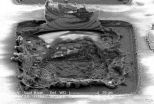(Press-News.org) Policy and practice changes by healthcare institutions, providers and others could greatly improve medical care and improve survival for people who have a sudden cardiac arrest in the hospital, according to an American Heart Association consensus statement in its journal, Circulation.
Each year, more than 200,000 adults and 6,000 children have in-hospital cardiac arrests, and survival has remained essentially unchanged for decades, statement authors said. According to the American Heart Association, only 24.2 percent of in-hospital cardiac arrest patients survive to hospital discharge.
Much more could be done to improve in-hospital cardiac arrest care by providers, institutions and the healthcare system, authors said.
A big obstacle to better care for in-hospital cardiac arrest is the inability to gather reliable data, said Laurie Morrison, M.D., M.Sc., statement lead author. "We must be able to count how many in-hospital cardiac arrests occur and report comparable outcomes across institutions — and apply the science to everyday care more quickly," said Morrison, also the Robert and Dorothy Pitts Chair in Acute Care & Emergency Medicine at St. Michael's Hospital in Toronto.
The statement's key recommendations include:
Establishing competency of all hospital staff in recognizing a cardiac arrest, performing chest compressions and using an automated external defibrillator or AED.
Ensuring that best practices are used in all stages of care for cardiac arrest.
Requiring that all in-hospital cardiac arrests be reported, with survival data, using consistent definitions across hospitals. Definitions currently are not standardized, researchers said.
Mandating that hospitals report rates per 1,000 admissions of do-not-attempt-to-resuscitate orders among patients before an arrest occurs. Variation in reporting and implementing these orders can dramatically skew data about patient outcomes.
Modifying billing codes to allow collection of more specific and accurate data for in-hospital cardiac arrest.
The authors also suggest separate guidelines for in-hospital versus out-of-hospital cardiac arrests.
###
Co-authors are Robert W. Neumar, M.D., Ph.D.; Janice L. Zimmerman, M.D.; Mark S. Link, M.D.; L. Kristin Newby, M.D., M.H.S.; Paul W. McMullan, Jr., M.D.; Terry Vanden Hoek, M.D.; Colleen C. Halverson, R.N., M.S.; Lynn Doering, R.N., D.N.Sc.; Mary Ann Peberdy, M.D. and Dana P. Edelson, M.D., M.S.
Read more about the long term care of sudden cardiac arrest, including the treatment of post-cardiac arrest syndrome. The American Heart Association also has more about how Get With The Guidelines®-Resuscitation is improving hospital care.
Follow @HeartNews on Twitter for the latest heart and stroke news. For science updates from the journal Circulation, follow @CircAHA.
The American Heart Association/American Stroke Association receives funding mostly from individuals. Foundations and corporations donate as well, and fund specific programs and events. Strict policies are enforced to prevent these relationships from influencing the association's science content. Financial information for the American Heart Association, including a list of contributions from pharmaceutical companies and device manufacturers, is available at http://www.heart.org/corporatefunding.
INDIANAPOLIS -- A study from the Regenstrief Institute and the Indiana University Center for Aging Research has found that many older adults are hesitant to halt cancer screenings even when the screenings may no longer be beneficial or may even be potentially harmful. The study is among the first to explore older adults' perceptions of recommendations to halt screenings for breast, prostate, colon and other cancers as they age.
"Older Adults and Forgoing Cancer Screening: 'I think it would be strange'" was published Online First by JAMA Internal Medicine. "I think it ...
In this News Digest:
Summary of a study being published online March 11, 2013, in the Journal of Clinical Oncology, analyzing self-reported data from 156 outpatient oncology practices participating in the American Society of Clinical Oncology's Quality Oncology Practice Initiative (QOPI®) showing significant improvements in performance on certain measures for quality oncology cancer care over a four-year period.
Overall, mean normalized performance scores from participating practices rose from 71 to 85 percent between 2006 and 2010; improvements were especially profound ...
Long-term droughts in the Southwestern North America often mean failure of both summer and winter rains, according to new tree-ring research from a University of Arizona-led team.
The finding contradicts the commonly held belief that a dry winter rainy season is generally followed by a wet monsoon season, and vice versa.
The new research shows that for the severe, multi-decadal droughts that occurred from 1539 to 2008, generally both winter and summer rains were sparse year after year.
"One of the big questions in drought studies is what prompts droughts to go ...
PROVIDENCE, R.I. [Brown University] — Early in the Moon's history an ocean of molten rock covered its entire surface. As that lunar magma ocean cooled over millions of years, it differentiated to form the Moon's crust and mantle. But according to a new analysis by planetary scientists from Brown University, this wasn't the last time the Moon's surface was melted on a massive scale.
The research, led by graduate student William Vaughan, shows that the impact event that formed the Orientale basin on the Moon's western edge and far side produced a sea of melted rock 220 ...
It seems counterintuitive that clouds over the Southern Ocean, which circles Antarctica, would cause rain in Zambia or the tropical island of Java. But new research finds that one of the most persistent biases in global climate models – a phantom band of rainfall just south of the equator that does not occur in reality – is caused by poor simulation of the cloud cover thousands of miles farther to the south.
University of Washington atmospheric scientists hope their results help explain why global climate models mistakenly duplicate the inter-tropical convergence zone, ...
(SALT LAKE CITY)—Vision scientists long have thought that lack of very long chain fatty acids in photoreceptor cells caused blindness in children with Stargardt type 3 retinal degeneration, an incurable eye disease. But researchers at the University of Utah's John A. Moran Eye Center have shown in a new study that lack of these fatty acids does not cause blindness, meaning that the search for the mechanism that robs sight from children with the disease must start anew.
Researchers led by David Krizaj, Ph.D., associate professor of ophthalmology and visual sciences at ...
SAN FRANCISCO -- A commonly used erectile dysfunction drug, sildenafil, doesn't help patients who have heart failure with preserved ejection fraction, a condition in which the heart's lower chambers are stiff and cannot relax and fill fully between beats. That is the finding of the RELAX study, presented today at the American College of Cardiology's 62nd Annual Scientific Session and simultaneously published in The Journal of the American Medical Association. The study's lead author called the results disappointing.
Sildenafil, a phosphodiesterase-5 inhibitor, had shown ...
Researchers have conducted a remote reconnaissance of a distant solar system with a new telescope imaging system that sifts through the blinding light of stars. Using a suite of high-tech instrumentation and software called Project 1640, the scientists collected the first chemical fingerprints, or spectra, of this system's four red exoplanets, which orbit a star 128 light years away from Earth. A detailed description of the planets—showing how drastically different they are from the known worlds in the universe—was accepted Friday for publication in The Astrophysical Journal. ...
PASADENA, Calif.—Imagine that the chips in your smart phone or computer could repair and defend themselves on the fly, recovering in microseconds from problems ranging from less-than-ideal battery power to total transistor failure. It might sound like the stuff of science fiction, but a team of engineers at the California Institute of Technology (Caltech), for the first time ever, has developed just such self-healing integrated chips.
The team, made up of members of the High-Speed Integrated Circuits laboratory in Caltech's Division of Engineering and Applied Science, ...
This press release is available in Spanish.
Pioneering studies by U. S. Department of Agriculture-funded research molecular geneticist Robert A. Waterland are helping explain how the foods that soon-to-be-moms eat in the days and weeks around the time of conception—or what's known as periconceptional nutrition–may affect the way genes function in her children, and her children's health.
In an early study, Waterland and co-investigators examined gene function of 50 healthy children living in rural villages in the West African nation of The Gambia. The study has shaped ...




